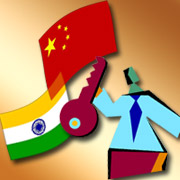Looking for more insights?
Sign up to stay informed about our latest article releases.
“When we first decided to go to China, people thought we were mad,” says Ravin Jhunjhunwala, who is chairman of $80 million Orind Refractoreis, Ltd., group. Now other Indian companies are following him. Yet Orind was originally envisaged as a joint venture. Most Indian companies take the same route. The reason: Getting into a new geography, about which very little is known, requires a helping hand. This is true of even the western and South Asian MNCs. Western MNCs, however, have totally different strategies than Indian companies. The basic difference is that most MNCs are looking at the Chinese domestic market. Indian companies, on the other hand, are more into sourcing from China, either to supplement their globalisation efforts or to feed the Indian market.

Sign up to stay informed about our latest article releases.